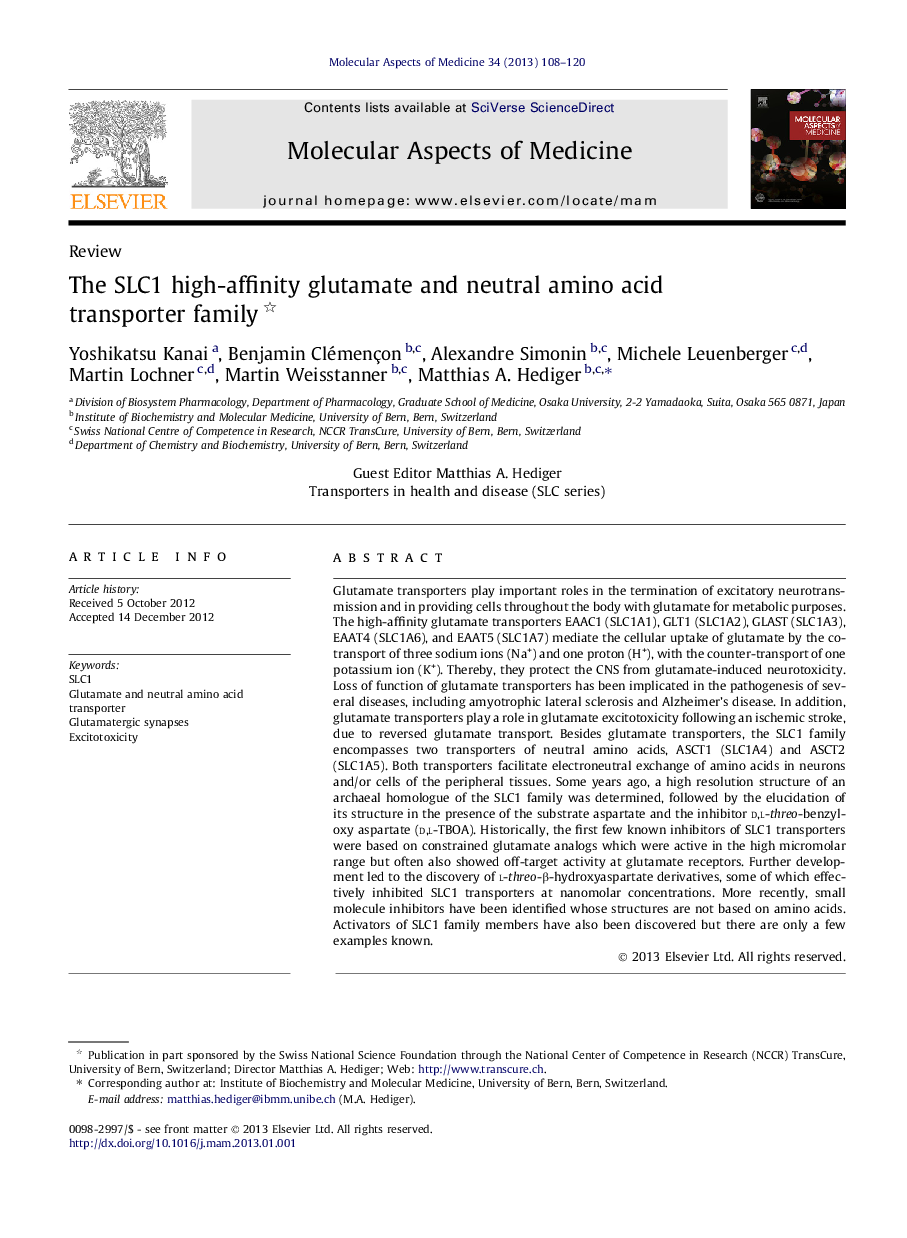| کد مقاله | کد نشریه | سال انتشار | مقاله انگلیسی | نسخه تمام متن |
|---|---|---|---|---|
| 8341499 | 1541453 | 2013 | 13 صفحه PDF | دانلود رایگان |
عنوان انگلیسی مقاله ISI
The SLC1 high-affinity glutamate and neutral amino acid transporter family
دانلود مقاله + سفارش ترجمه
دانلود مقاله ISI انگلیسی
رایگان برای ایرانیان
موضوعات مرتبط
علوم زیستی و بیوفناوری
بیوشیمی، ژنتیک و زیست شناسی مولکولی
زیست شیمی
پیش نمایش صفحه اول مقاله

چکیده انگلیسی
Glutamate transporters play important roles in the termination of excitatory neurotransmission and in providing cells throughout the body with glutamate for metabolic purposes. The high-affinity glutamate transporters EAAC1 (SLC1A1), GLT1 (SLC1A2), GLAST (SLC1A3), EAAT4 (SLC1A6), and EAAT5 (SLC1A7) mediate the cellular uptake of glutamate by the co-transport of three sodium ions (Na+) and one proton (H+), with the counter-transport of one potassium ion (K+). Thereby, they protect the CNS from glutamate-induced neurotoxicity. Loss of function of glutamate transporters has been implicated in the pathogenesis of several diseases, including amyotrophic lateral sclerosis and Alzheimer's disease. In addition, glutamate transporters play a role in glutamate excitotoxicity following an ischemic stroke, due to reversed glutamate transport. Besides glutamate transporters, the SLC1 family encompasses two transporters of neutral amino acids, ASCT1 (SLC1A4) and ASCT2 (SLC1A5). Both transporters facilitate electroneutral exchange of amino acids in neurons and/or cells of the peripheral tissues. Some years ago, a high resolution structure of an archaeal homologue of the SLC1 family was determined, followed by the elucidation of its structure in the presence of the substrate aspartate and the inhibitor d,l-threo-benzyloxy aspartate (d,l-TBOA). Historically, the first few known inhibitors of SLC1 transporters were based on constrained glutamate analogs which were active in the high micromolar range but often also showed off-target activity at glutamate receptors. Further development led to the discovery of l-threo-β-hydroxyaspartate derivatives, some of which effectively inhibited SLC1 transporters at nanomolar concentrations. More recently, small molecule inhibitors have been identified whose structures are not based on amino acids. Activators of SLC1 family members have also been discovered but there are only a few examples known.
ناشر
Database: Elsevier - ScienceDirect (ساینس دایرکت)
Journal: Molecular Aspects of Medicine - Volume 34, Issues 2â3, AprilâJune 2013, Pages 108-120
Journal: Molecular Aspects of Medicine - Volume 34, Issues 2â3, AprilâJune 2013, Pages 108-120
نویسندگان
Yoshikatsu Kanai, Benjamin Clémençon, Alexandre Simonin, Michele Leuenberger, Martin Lochner, Martin Weisstanner, Matthias A. Hediger,